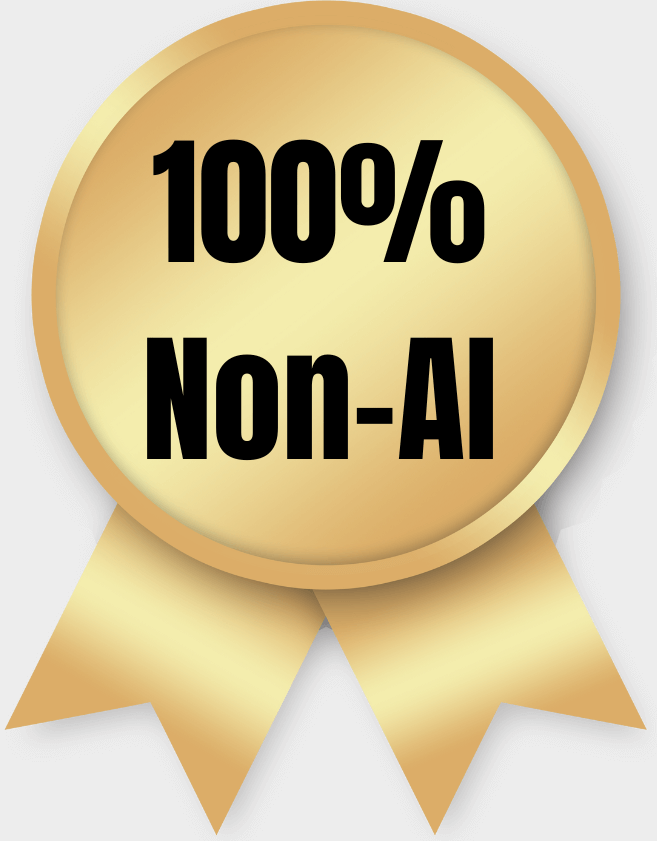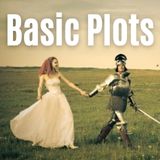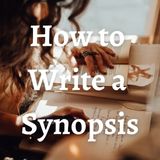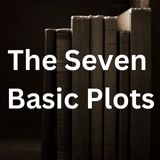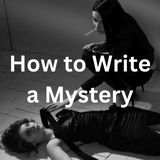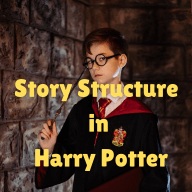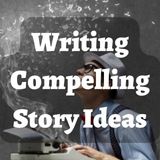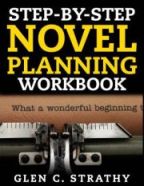Impact Character for a Series
by Kyle
(Asheville, NC)
I am writing a trilogy using the Dramatica software and I have a question about creating an impact character for a series. I plan to make a series storyform as well as a storyform for each installment. I read on Dramatica's website that this approach is desirable and can cover a lot of ground.
I have three different Impact Characters planned for each of the three stories. My question is what do I do for the series storyform?
I have the series IC as a plural player with the three other characters' names. My overall vision is for the MC to be struggling with a Fixed Attitude over the course of the series. In each installment, the book's respective IC will be presenting the opposite Ideology. Each book will have its own MC/IC relationship with that character, but the overall series relationship is peppered in too, stretched out over the three books and ICs. Is there a better way to do this?
So glad I found your website, BTW. This might be the perfect place to turn to now and in the future.
Answer: There's nothing wrong with how you envision the series so far, but here are some thoughts...
* Since each book will have its own storyform, in addition to the series storyform, you want to create the sense that the main plot is resolved in each of the first two books, and yet some things are left hanging (the series arcs). The Harry Potter books are a great example of how to do this. Each book has a complete story while advancing the series story as well.
One thing that can help is to have a separate IC for the series itself. Unlike the other ICs, this character's arc and relationship to the MC will be unresolved in the first two books. That way, the reader will want to keep reading the series to find out what happens with this character. (This works particularly well if the series IC is also the series antagonist.)
With that in mind, the other ICs can be used to
* Make sure you know what the story goal for the series is, as well as the story goal for each installment. They can be quite different. I personally think the 8 elements are the best place to start when sketching a plot.
* You may find that the third book only needs to be about the series storyform. Or at least, the series story will be in the foreground in the third book, even though it has been more in the background in the first two books. By this point, you hope your reader should be anxious to see how the series will resolve.
* It's also helpful to plot out the drivers for the series. For instance, the first driver might be the prologue (perhaps told in flashback in the first book). The second driver might occur at the end of the first book, after that book's storyform has been resolved (sometimes as an epilogue). In this way, the second driver sets up the tension for the next book (what will happen as a result of this event?).
Of course, if you're a beginning novelist, you don't know if the first book will sell, so you may feel inclined to put the second driver at the start of the second book. (Another option these days is to stick the first chapter of the second book, featuring this driver, at the end of the first book as a way to tease readers, but you can only do this if you get a contract for the sequel.) Your editor may have some preferences here.
* Assuming you want your MC to be a change character (the change happening in the last book), that may imply he/she must be steadfast in the earlier books. If the MC changes, then he may not have the same appeal in the next book, so you risk disappointing some readers. For instance, if Katniss had given up her hard edge at the end of the first Hunger Games book, she would not have worked for the next two.
Best of luck.
Comments for Impact Character for a Series
|
||
|
||
Examples of Impact Characters
by Amanda
(Texas)
Question: I just finished reading your article on Writing an Outline, and the only snag I've really encountered in it is the Impact Character Throughline. I think I know who it is in my story, yet I've only come up with one signpost. I'm not sure I understand who the impact character is. Can you give some examples of impact characters from other stories, and maybe some tips on filling in the signposts?
Answer: The impact character will be the person who offers the main character an example of a different approach - or argues for a different approach - which creates the main character's inner conflict. ("Should I do what I know to do, or do what he would do?")
The MC's choice of whether to change or stay steadfast determines whether he/she can achieve the story goal.
Examples...
Obi wan Kenobi is the IC to Luke Skywalker, urging him to trust his feelings/the Force rather than his senses/anxiety.
Voldemort is the IC to Harry Potter. While Harry always risks his life to save others, Voldemort kills others to preserve his own life.
Peeta is the IC to Katniss in the Hunger Games. While Katniss generally takes a pragmatic approach for the sake of her family's survival, including letting the Games change her, Peeta will risk his own safety to help her and cling to his own identity.
Twilight - Edward is IC to Bella, giving her an example of who she might become.
Often, the IC is either the antagonist, the love interest, or a mentor figure. But any character can be the IC.
It's actually a fun game to watch movies or read books and try to spot the impact character. Look at the decision the main character makes at the climax. Does he stay the same or follow someone else's example/urging? The IC will be the one creating the choice.
Generally, the IC's signposts chart the progress of his influence on the main character. The first signpost is when the main character first sees the IC taking a different approach. The second signpost may have the IC's example put more pressure on the MC to change. Third signpost will be the IC's strongest argument. Fourth signpost will show how things turn out for the IC.
Bear in mind that the IC isn't necessarily trying to influence the MC (although that can be the case). It may be that the MC simply observes the IC, sees how he tackles problems, and then is forced to evaluate whether the IC's approach is the right one for the MC to take.
Multiple Impact Characters in the same story
by Michael9333
(Las Vegas, NV, USA)
Question: Can there be multiple impact characters in the same story?
For example, can there be an impact character who appears later in the story while some other impact characters appear and then leave the story or maybe reenter later?
Must there be only one impact character, at a time, actively engaging the protagonist?
Can there be one or more impact characters who are being developed in the story while the main/protagonist is unaware of them?
Answer: By definition, the impact character is the one who argues for or exemplifies the other side of the critical choice the main character makes at the climax. Other characters may offer different perspectives, but the impact character is the key influence that creates the main character's core dilemma that determines the outcome of the story.
That said, there are stories in which an impact character will drop out of the story and his/her influence will continue to be expressed by another. One word for this is a hand-off. For instance, Obi wan Kenobi's role as impact character to Luke Skywalker is passed on to Yoda in Star Wars: The Empire Strikes Back. Sometimes, if an impact character dies, his influence is carried on through his surviving relative, a diary, a memory, his mentor, etc.
Occasionally, you will have a character who has no fixed approach, who comes across as rather naive. Such characters have little reason not to simply follow the impact character's advice. To create inner conflict in such stories, writers will sometimes create two impact characters with opposite approaches, so that the main character must choose which of them to follow.
For instance, in the film The Matrix Reloaded, Neo's essential dilemma is whether to try to save the woman he loves or let her die and save the entire world, including the machines. He encounters two impact characters: the Oracle, who argues for saving the world, and the Merovingian, who argues for self-interest. Self-interest turns out to be the right choice, but the writer deliberately makes it a tough choice by making the Oracle far more likeable than the Merovingian.
Comments for Multiple Impact Characters in the same story
|
||
|
||
|
||
|
||
Can a Story Have Two Impact Characters?
by Jehrum
(Salt Lake City)
Question: Can a story have two impact characters? I ask because, after looking at my overall story outline, I discovered that my main impact character plays that role for most of the novel, but is absent from the first chapter and stops playing the impact character role just before the climax. To accommodate that, a character introduced in the first chapter sort of came to life and developed to have similar goals to those of the main character's, but he uses completely different methods to accomplish these goals. This makes him an ally to the main character in the first chapter, but because his methods and beliefs are so different from those of the main character, they end up clashing just before the climax. This makes him a good candidate for the impact character role, but I already have an impact character who works with the main character for most of the novel and is her polar opposite personality wise. They each present their own points of view to the main causing her to question how she should approach her job and life in general, but represent different ideas that neither compliment or clash each other and are almost never present at the same time in the story. Is it alright to approach the story this way, or should I just stick with one impact character?
Answer: Understand that one caveat here is that I haven't read your story, so I just have to infer from what you're telling me (which is necessarily incomplete).
The key to the impact character is the choice the main character ultimately makes: will she change, and adopt the impact character's approach, or will she grow in her conviction to remain steadfast?
So the first question is: what choice does the main character make? Is her crucial decision to adopt the approach of the first impact character (the one from chapter one) or the second?
From what I gather, your first impact character is present at the beginning (act one in a four-act structure) and near the climax (act three), which suggests that this character provides the example near the climax that has the greatest influence on the main character.
However, I gather the first impact character is missing from act two. Does this mean the main character's inner conflict is missing here (which would be a plot hole)? This would run the risk of deflating the tension regarding this conflict. Usually act two is where the pressure on the main character to change grows. On the other hand, if the second IC repressents the real innuer conflict (the one that must be decided at the climax) then having him just in act two could leave holes in this throughline.
It would be cleaner to have just one impact character. However there are other possibilities...
1. Hand-off the role of impact character to the second candidate in act two. But in this case, the second IC would represent the same approach as the first.
2. Sometimes you can have a main character who doesn't have a very strong conviction, so you can give her two impact characters with opposite approaches all through the story. She must then decide at the climax whose approach to adopt.
3. Sometimes a main character can try out an approach and waver on it before making a firm decision at the climax. For instance, maybe she adopts the first impact character's approach in act one. Then, in act two she is pressured to go in a different direction, perhaps by this second character, but then in act three she realizes the first IC was right all along and chooses to go back to his approach.
4. Sometimes you can have a sub-plot with a second impact character to illustrate why the main character resists the advice of the main impact character. However, in this case you still want the main impact character's arc to be complete. That is, he should appear in all four acts and his influence should be expressed as...
1. setup (establishing influence)
2. growing influence
3. maximum influence
4. impact character's resolution at end of story
Bottom line, I think you have to decide what the crucial inner conflict is for your main character and make sure that is fully developed. If that means reducing the role of another character, so be it.
Comments for Can a Story Have Two Impact Characters?
|
||
|
||
|
||
|
||
Two impact characters?
by Uchiha Sasuke
Question: Can a story have two impact characters? For example, my character is really damaged/depressed for the first part of the novel. From the start, he has this best friend that is the obvious impact character that is trying to help him through and heal him and stuff. Later in the story, the main character's brother comes into the story. His brother is also trying to help him through and stuff. Is it OK that the brother and friend are both impact characters?
Also, another thing that helps the main character heal is this girl he starts to like throughout the story
Answer: What you want to do is create a strong tension between two opposing approaches. The main character will have his approach and the impact character will have the opposite.
There are two ways you can do this in your situation.
1. Consider that story world, including all the minor characters, may have its own approach and values. But these may not touch on the main character's real conflict.
For instance, let's say you have a character who's depressed and wants to die. The world around him may be full of people who don't understand him and simply think he should buck up and stop feeling the way he does. But these people don't have any real impact on him.
Added to this, you might have one character who demonstrates a reason to live that no one else does -- someone who really does get under the main character's skin and makes him question his approach in a way no one else manages to do. That is the impact character.
2. It is possible for the impact character's function to be handed off from one character to another. This is usually done in cases where the original impact character dies or exits the story. For instance, let's say the main character had a grandmother he loved who demonstrated a reason to live when he was younger, but has now passed on. But then he meets a girl who has the same joie de vivre his grandmother did and causes him to reconnect with those old feelings and re-examine his current attitude.
Bear in mind that it is usually more effective to have one character at a time impact the main character in a personal way. To have several characters at once performing the impact character function at once is redundant and can feel artificial -- more like an intervention than a relationship.
A final tip... Often -- though not always -- the impact character is the main character's love interest, because few relationships touch us as deeply as a romantic relationship. Also, men tend to be linear thinkers and women tend to be holistic thinkers. Therefore, a love interest is often well suited to offer a different perspective on a problem -- and be listened to.
Best of luck.
Can Three Characters be Impact Characters to Each Other?
by JL
Question: Can three characters be impact characters to each other? I've chosen my "main" character, as in, the character that'll be making THE choice in the climax, but my other two characters are also PoV characters and I'd like to develop them fully.
Answer: Yes, it is possible. If we call the characters A, B, and C, you could have an arrangement like...
A is impact character to B
B is impact character to C
C is impact character to A
The key is to have each of your POV characters experience a different type of inner conflict and be influenced by their impact character in different ways, so they all have the potential to grow and learn. Redundancy tends to be boring.
Mind you, not all the characters have to be change characters, and not all have to make the right choice at their personal crisis. So one or more POV throughlines could end with a judgment of bad.
Bear in mind that to fully develop all three characters can make your novel feel like three stories in one, since all POV characters are the hero of their own stories. It may help unify the book if they can all share the same overall throughline, i.e. be involved or affected by the effort to solve the problem that concerns the story world.
Best of luck.
Can the Impact Character be a Group?
by Carolyn Walter-Burch
(London, UK)
Question: Can the impact character be a group? In other words, could the thing forcing the protagonist to question their habitual ways of solving problems be a sort of 'generalised other'? Eg an environment the protagonist finds herself in, where everybody else seems to be doing something a different way?
If so could this be exemplified through various different characters who all take the same approach but different to the protagonists?
Answer: Great question. Sounds like what you are describing is a "man vs. society" type of conflict where the main character finds himself at odds with society as a whole, where his dilemma is whether to conform to social norms or rebel.
Certainly, you can make society itself the impact character, though it is more typical to have a character who represents the attitude or approach taken by society (e.g. Number 2 in the television series The Prisoner or the Prime Minister in A Clockwork Orange).
It is also perfectly acceptable for the role of impact character to pass, like a baton, from one character to another. The main character could encounter several people at different points in the story who have the same attitude/approach and who challenge him in similar ways.
Another variation is stories that have two impact characters advocating opposite approaches. The main character in such stories is often very innocent or naive. He has no experience handling the type of problem before him, so he must choose which of the two impact characters to emulate.
Note that the impact character doesn't have to actually appear in the story, as long as his influence is felt. You could have a character like Big Brother in 1984 who is a mere symbol representing a particular attitude/approach taken by society at large.
Another sidebar: It is common in this kind of story for the impact character to be the antagonist as well, though this is not necessary. You could have a story in which society faces a particular villain and the main character must choose between society's way of tackling the problem or his own.
Lots of possibilities, but the short answer to your question is yes.
Impact Character
by Kay
(Grand Rapids, MI, USA)
Question: In a story where the main character is the protagonist, does your impact character have to be the antagonist?
Answer: Absolutely not. Traditionally, it has been common in plot-based genre fiction for the impact character to be antagonist, because these stories placed less emphasis on the main character's inner conflict. Combining the protagonist/antagonist relationship with the main character/impact character relationship is a way to simplify things. (Think James Bond vs. Ernst Blofeld in the early bond films, Sherlock Holmes vs. Moriarity, or Batman vs. the Joker.)
However, stories are usually much richer, more emotionally profound when the impact character is someone else and the story of the main character's inner conflict is distinct from (though still connected to) the overall plot. In romances, for example, the impact character is usually the main character's love interest and often these two characters will join forces against the antagonist.
In recent decades, forms of fiction that used to be very simple (for example, comic books) have been putting more emphasis on emotional depth, so it has become common even in these forms for the impact character to not be the antagonist.
For example, in the recent Green Lantern film, the antagonist was Parallax, a rogue villain who fed on fear. The impact character was Sinestro, a character who represented the principles of willpower and courage. He believed one had to reject fear.
Hal Jordan, the main character, tries to follow the same principles as Sinestro, principles he learned earlier from his father. But Hal knows in his heart that his fears cannot be suppressed. Eventually, Hal learns to stop fighting this part of himself, accept his fears, and use them to advantage. So he sticks to his original nature.
This forces Sinestro to change, and we see him at the end giving up his old principles and embracing fear as his new principle.
If you consider the 8 classic archetypal characters, the impact character is often the Guardian (the hero's mentor). For example, Obi wan Kenobi is the impact character to Luke Skywalker. But any of the archetypal characters can be the impact character.
Imagine for instance...
A Contagonist who tempts the main character to change his approach.
An Emotion character who shows the main character how to look at the bigger picture.
A Reason character who shows the main character how to focus on the most important task.
A Skeptic who challenges the main character's illusions.
A Sidekick who is smarter than the hero.
Forgive me for going off-topic a little, but even the protagonist can be the impact character in stories where the main character is someone else. For instance, you could tell the story from the point of view of the sidekick whose hero (the protagonist) shows him a better way to live. This has been the case with several of Dr. Who's companions in recent years. Melanie Anne Phillips often cites the novel To Kill a Mockingbird as a good example of a novel where the protagonist, main character, impact character, and antagonist are all separate characters.
Comments for Impact Character
|
||
|
||
|
||
|
||
|
||
|
||
|
||
|
||
|
||
|
||
|
||
Impact Character Throughline
by Terrell
(Columbia, MO)
Hello, I have another question regarding the impact character throughline and plotting:
A.) Is it possible to to have two separate/opposite impact characters? If so, do each impact character need their own individual "Impact Character Throughline"? If so, would they each need their own "Relationship Throughline"?
B.) If all the answers to the above question is yes, would I then need two separate domains list (Situation, Activity, Manipulation, and Fixed Attitude) for both characters? Assuming that the Main character has a different starting and ending relationship with each Impact character?
P.S. Your help has been tremendous on my story. Thanks again and if you are confused in any way by my question, just point it out and I will correct accordingly.
Answer: Two separate and opposite impact characters are usually employed only if your main character has no established approach -- for instance if he is very naive, like a newborn babe in the world.
In such a situation, when the impact character suggests an approach, the main character has no reason not to simply follow that that advice. Result: no inner conflict.
So to create inner conflict for the naive main character, writers will sometimes create two impact characters with opposite approaches so that the main character's inner conflict becomes, "Who do I believe? Who do I emulate?"
The risk you run with this approach is that you could make the main character a less distinct, more bland, because he will seem to switch sides at times, or to be on no side. You would be in effect creating a subplot in which the main character would seem to be in one domain when dealing with one IC and another domain when dealing with the other. He'd be forced into these domains in order to be in opposition to the IC. Very tricky.
You are correct that this implies two relationship throughlines, otherwise the IC who has no relationship with the MC would have a harder time influencing him. (Bear in mind that a relationship can be distant.) However, unless you want to create a second overall throughline as well, the relationship throughlines for both relationships would likely be in the same domain, which would be diagonal to the overall domain.
In a longer novel, it is possible to have more than one story, each with its own set of throughlines. Or you can have subplots that are less developed than the main story. Sometimes the various subplots can involve some of the same characters or share one overall throughline.
However, it is more common to see multiple impact characters who represent the same approach and have the same domain. They simply appear at different times in the story. They represent the same dramatic role, but the baton is passed from one to the other. It's like in The Prisoner TV series where each episode has a different person running the prison, and there's never more than one, but they all have the same approach and attitude.
You can also have a group be the impact character, as in a corporation or army where all the members take the same approach.
So many options!
Impact Characters in movies
by Terrell
(Columbia, MO)
Hello, I have a few questions to ask in regards to impact characters in movies.
A.) First have you seen: Inception, Godfather part 1 and 2, The Matrix, as well as The Lord of the Rings Trilogy?
B.) Secondly, if you have seen any of the above movies, my friends and I have been arguing about who were the impact character in each movie. We already know that the main-protagonist in each movie are: Dom Cobb, Michael Corleone, Neo, and Frodo Baggins respectively. Who are each of their impact characters and why in your opinion?
I think in Inception it is either Mal Cobb or Ariadne; Godfather part 1 I think its Vito Corleone, but I have no idea for part 2 because it didn't that anyone influenced him; in the Matrix, it is between Morpheus or Agent Smith; and finally LOTR, I feel its either: Gandalf, Samwise, or Gollum. What do you think?
Your advice have truly been helpful.
Answer: This is a fun game isn't it - picking out the impact character?
Here's my contribution, for what it's worth...
1. The Godfather. I'm not overly familiar with this series, I must confess, but Melanie Anne Phillips pegs the impact character as Kaye Corleone, whose role is to influence Michael not to become part of the organized crime racket. He doesn't take the advice.
2. Inception. When I saw this film, I recall feeling that the impact character was Mal, in that she was trying to convince him that what he thought was real was actually another level of dream. If true, this would destroy his happy ending where he gets to be with his kids again. (In other words, he stays steadfast by not heeding her warning.) But don't take this as definitive.
3. The Matrix. This one is easy. Neo's problem is that he has a hard time believing he could be the One. He doesn't "know himself," as the Oracle points out. Morpheus is the impact character who keeps trying to convince Neo of his potential. The need to rescue Morpheus is what finally causes Neo to change by giving up his self-doubt, which leads to Success. I do understand the confusion, since Agent Smith seems to act as the impact character to Morpheus at one point (when the film switches to Morpheus's point of view). Also Smith keeps saying Neo is "only human." But he doesn't really influence Neo so much as play the role of antagonist, trying to prevent the Goal, which is for the rebels to find the One.
4. Lord of the Rings. I have pondered this one for some time after a student asked me a similar question. While I'm not convinced Tolkein's story structure is 100% sound, I believe the impact character is actually the ring itself. Throughout the film, the ring keeps trying to persuade Frodo to put it on rather than destroy it. Frodo is a change character who, at the climax, follows the ring's direction and puts it on. As a result, though the story's Outcome is Success (the ring is destroyed), the Judgment is Bad. Frodo is left permanently damaged by his mistake (lost finger, morgul wound) and unable to ever truly return to life in the Shire the way his friends do. This makes LOTR a comi-tragedy.
Hope that helps a little.
Comments for Impact Characters in movies
|
||
|
||
|
||
|
||
Impact Character Influence
Question: My impact character is my main character's long time friend. My protagonist is supposed to be a fairly decisive person. How can the impact character influence him without making him seem indecisive? Is there a way to create a balance between him being influenced by the impact character and sticking to his own judgment?
Answer: One way is to have your main character see the impact character succeed at something by taking the opposite approach the main character would. You can also have the main character try to do things in his usual way and not achieve success. Or you could have the impact character beat the main character in some competition. Several incidents like these in the first two acts create pressure for the main character to change. Of course, the impact character could also try to persuade the main character to do things differently, but examples speak louder than words.
Usually, the main character won't actually switch to the impact character's way of doing things until the climax, when there's so much at stake he can't afford to fail. By that point, enough doubt has been created in his mind that he's willing to try something new.
Of course, some main characters refuse to change. In such cases, the impact character usually changes instead. Sometimes that works out, and sometimes it doesn't (depends whether you want a happy ending).
When the Impact Character's Influence Goes Wrong!!!
by Terrell
(Columbia, MO)
What happens when the impact character's influence goes wrong? Is it possible for an impact character to influence the protagonist to a point that he/she actually does change in the end, but however, the impact was not like how the impact character intended?
For example, can a protagonist be a archetypal good guy and their impact character is more of an anti-hero; willing to do what is necessary to get the job done. However, when or if the protagonist changes his/her ideals to match the impact character, he/she instead takes it a step further and is much worse than the impact character and not exactly how the impact character wanted to influence them?
Answer: Technically, the main character's perception of the impact character and his interpretation of what the impact character is doing creates the pressure to change. Sometimes the impact character is trying to influence the main character. Sometimes he's just following his own agenda and the main character observes what the impact character does and responds entirely on his own. And sometimes the main character can misinterpret the impact character.
For instance, an interesting variation is the Hitchcock film Rope, in which a student who takes to heart the words of a former teacher and conspires to commit murder to prove his 'superiority.' The teacher had talked about how it should be okay for superior men to commit murder. But the teacher would never commit murder himself or approve of murder. Entertaining the idea of murder is more of a joke, an intellectual exercise. (The movie is an early entry in the Dark Academia genre, though it doesn't actually take place on a campus.)
The student then invites the teacher to dinner and the bulk of the film consists of the student dropping hints about the murder. (We suspect he again is showing off his superiority and wants the teacher's approval once the murder is discovered.)
Of course, the teacher is horrified to see how he has unwittingly influenced his student (who probably suffers from sociopathology), and condemns rather condones his actions.
It's a variation because the film starts with the murder which is really the crisis in the throughline of the impact character's influence. However, it is an example of how a main character can be influenced by an impact character in ways that the impace character did not intend.
The role of the impact character
by claudiacv
(Mexico)
Question: I´ve been reading about the role of the Impact Character and I think Dramatica states that it should not be the antagonist (am I right?)but rather a mentor or friend--someone who can push the MC into doing what he has to do or being who he was meant to be. Is this correct? But what if the antagonist serves this purpose?
My second question would be--does the IC have to physically present throughout the story or can it be a memory of someone, for example the memory of the father figure that lives inside the MC?
Answer: Actually, the impact character can be the antagonist, but that may not be the best choice for your story.
In the traditional, comic-book, pulp fiction type of hero story, the hero was both the main character and the protagonist while the villain was both the antagonist and the impact character.
In that type of story, the hero defines himself as different from the villain in a fundamental (and virtuous way). The villain may try to convince the hero to become like him, but fails. When the hero wins the conflict, the thematic message is that virtue wins over evil.
The problem with having the antagonist be the impact character is that it makes it hard for the main character to change - because changing would mean becoming like the villain. It would be like George Bailey in It's a Wonderful Life accepting the job offer from old man Potter - which would imply becoming like him. Or like Batman giving up his sense of justice and becoming no different than the Joker.
The reason these stories feel a little predictable is that they are. Sophisticated readers know the hero will remain steadfast, because it would be unthinkable for him not to (except perhaps in tragedy). The writer can try to make the decision seem difficult, but the sophisticated readers usually see through that.
However, if you separate the roles of the impact character and the antagonist, the main character does not have to remain steadfast. The impact character can be an example of the either the wrong way or the right way to solve the story problem. The right decision at the climax becomes less predictable. Should the main character change or not? Is the main character's usual approach the right way to solve the problem, or is the impact character's way right? Neither the main character nor the reader knows for sure until after the crisis has been resolved. The main character does not have to remain steadfast but can change at the crisis, adopt the impact character's approach, and have that be the right decision.
Of course, there are still many stories written in which the villain is the impact character and the main character stays steadfast. Series, for example, often work this way, because if the main character changed he would be a different person in the next book and might not appeal to the same type of reader.
As for your second question...
No, the impact character does not have to be physically present for his influence to be felt. His/her influence can come through memories, other character's recollections, diaries, monuments, videos, classroom lessons, religious teachings, etc. For instance, you could have a story where the main character's idol is Captain Picard from Star Trek. Every time the main character had a tough choice, he might think about what Picard would have done. Or he might flip through a book of Picard quotations, get a visit from an imaginary spirit of Picard, watch an episode of Star Trek on DVD, talk to a Picard fan, etc.
Impact Character Became a Second Main Character
by Kina
(Schaumburg, IL)
Hi, so I'm writing a YA fantasy in which my impact character became a second main character in the development progess. I went through the first 6 parts quite smoothly until it was time to choose my MC and her essential counter part. I already knew that I wanted to my protagonist to be the main character with 1st person POV, but I soon realized there were going to be many scenes where she would be separated from the impact character and the reader needs to know what's going on between both of them so I decided to switch between MC 1st pov and Impact 3rd limited pov. However this turns the impact character into a 2nd main character and with two MC's, that leaves no impact character! Would they both be each other's impact character or do I need another?
Answer: Simply put, you don't need another impact character. It's your choice.
It's quite common in romance novels to have two POV characters (the romantic leads), each acting as the other's impact character. Usually the female lead is the primary main character, since romances are written for a female readership.
However, the technique is also used in other genres.
Bear in mind that when you are in character A's POV, character A will be looking at character B, and what A observes B doing or saying will have an impact/influence on A. Similarly, when you are writing from character B's POV, B's perception of A's actions and words will influence B.
If you have two POV characters, you may decide to make one of them your primary main character. This will be the character whose decision (whether or not to change) determines the outcome at the crisis. In other words, while the second POV character may be the main character of his/her own story, that story may not be fully developed.
While it's tricky to do, you can also choose to make each POV character more or less equal. That is, both their change decisions would have determinative effect on the outcome of the story. For instance, if each of them learns from the other and changes in some way that allows both of them to make an essential contribution to the outcome.
If you go that route, I'd suggest you make each character's inner conflict revolve around a different quality. It might be a bit silly, for example, to have them simply switch sides of the same argument. (For instance, if character A chooses selflessness after seeing character B behave selflessly, while character B learns to be selfish after watching character A's selfishness.) To do so, each would somewhat undermine the other's decision.
The guideline is that if one character changes by adopting some quality he sees in the other, the other character will stay steadfast regarding that quality. On the other hand, if one character stays steadfast regarding a quality, the other character will change.
Comments for Impact Character Became a Second Main Character
|
||
|
||
|
||
Question about the Impact character.
by Roger
(Brazil)
I'm here with a question about the impact character (and other questions), if you don't mind.
In the middle of my story, the protagonist (the one in pursue of the story goal), will find out that he has to sacrifice his life in order to achieve the story goal. But he keeps this a secret from everyone. Now the main character (a girl), who has the ability to read minds, once made a promise to the protagonist to not read his mind ever, because he doesn't want her to read his mind. Although there's no way the guy would know if the girl is reading his mind, the girl still keeps this promise, partly because she's kind of naive, but mostly because she likes him. So, at the climax, although they are close to achieving the story goal, the main character feels something is wrong. She thinks that the protagonist has been so secretive to her despite the fact that they're very close friends. She knows he's hiding something, but she can't read his thoughts because of that promise. So, her inner conflict is, will she read the guy's thoughts and break her promise, or not.
In the end, she reads his thoughts, knows about the protagonist's plan of giving his own life, and sacrifices herself instead of the protagonist in order to achieve the story goal.
Now, my questions are these.
1. I've read on your site that the impact character gives the MC an alternative solution to his/her inner conflict. But in my MC's case, she already has options to solve her inner conflict, without an IC telling her an alternative solution. Do I still have to create an impact character? Or is it possible that the IC is the protagonist himself? (since it was him with whom the girl has made a promise, and he trusts her to keep that promise), or could the IC be the girl's conscience, telling her that if she reads the guy's thoughts, she would break her promise.
2. How would you describe the ending? The story goal is achieved, but it's not the protagonist that did it, it was the MC. Is it a comi-tragedy or a tragi-comedy?
Sorry for writing such a long question. I hope you could help me on this one (again). Thank you very much!
P.S. I'm writing a story for a comic book. :)
Answer: Regarding your first question... What you have to consider is who the main character is when the story begins.
For instance, does she start out as someone who uses her talent to eavesdrop on other people's thoughts despite the invasion of privacy being viewed as immoral? In that case, your protagonist could serve as impact character, pressuring her not to use her talent. She would then be a steadfast character who, at the climax, chooses to disregard his advice and stick with her own approach.
On the other hand, if she starts out as someone determined not to invade his privacy, then you might need another character who can serve as impact character. This other IC would offer an example of why it is better to read other people's thoughts or delve into their personal information. He/she could gradually undermine her resolve, perhaps by pointing out that the protagonist may be hiding something important. Your main character would then be a change character who chooses to follow this person's advice at the climax.
Regarding your second question...
There should only be one right choice that will lead to achieving the story goal, and you should make that clear to the reader. If it doesn't matter who dies, then the main character's decision is less meaningful in terms of the overall story (though it may be personally meaningful to these two characters).
In other words, if the protagonist's sacrifice would have resulted in failure while only the MC's death would lead to success, then the MC's decision to read his mind would be the right choice. She would be the one saving the day and he would be wrong for hiding his intent.
If her death can also be seen as a good resolution of her inner conflict, then you'd have a happy ending. If her death feels like a bad resolution, for her then you would have a comi-tragedy.
The same two options are true if either person's death would lead to success, but you would have less emotional impact as the protagonist would not be left in a situation where he realizes his error and the great deed she did for the world.
On the other hand, if the goal can only be achieved if the protagonist dies, then the MC's decision to take his place would result in an outcome of failure and you would have either a tragedy or a tragi-comedy. By disregarding his advice and interfering in his plan, she would ruin things.
However, I doubt you are writing a tragic ending, unless you are making her a rather evil person, in which case why would she lay down her life for another?
Hope that helps.
Comments for Question about the Impact character.
|
||
|
||
Can an impact character be dead?
by Natalie
(Albuquerque, NM USA)
My current novel-in-progress is fantasy genre, and the protagonist is a healer who develops the ability to transfer (or "take") wounds, disease, and poison from others to herself, but I am giving her the limitation of having to heal herself with bandages, remedies, and time, and the two goals of 'how can I use this ability without killing myself?' (which is very possible since none of the healers she knows can teach her how to use it) and "what meaningful thing can I do with this ability?"
Based on your description of the impact character, I am thinking that would be her aunt, but her aunt is dead. In the resolution section of the story, her dead aunt's journal comes back into her hands (she's had it for years, just never bothered to read it because the style was stilted at the beginning as the aunt got used to writing in it) and she finally reads it. The journal recounts the aunt's time in the nation of Tel where she went to be trained as a healer and the normal way of healing is to transfer wounds, disease, and poison onto yourself then heal yourself using magical spells. My protagonist realizes if she can follow in her aunt's footsteps and learn how to cast the same spells, her wound-taking ability will become much more useful, and my intention is that a second book would be about her traveling to Tel and getting the same training.
Since some of the structure discussion hinted that the relationship between the impact character and main character should change, I wanted to make sure it's okay for the impact character to be dead. I suppose technically my heroine's perceptions of the aunt do change, but I'm not sure that qualifies.
Thanks for the input!
Answer: Yes, an impact character can be dead. What matters is that the impact character's example pressures the main character to change. Using the journal is a good choice, because the main character can read it gradually throughout the story, so that different episodes in the diary can have a growing influence on her.
As for the relationship throughline, think about how the MC's relationship to her aunt might evolve as the story progresses. For instance, might she start out having the wrong idea about her aunt, then come to see her as a mentor, an ally, a dangerous tempter, a friend along the journey, etc. It might help if the aunt faced her own crisis at some point (recorded in the journal).
I would encourage you to make the key difference between the two approaches (the MC's and the IC's) as personal as possible. You want to generate inner conflict leading to a personal change in the main character.
It's also a good idea if the MC must make a real leap of faith at her personal crisis. If she is in a position where the right choice will save the day and the wrong choice result in catastrophe, making that leap will be all the more meaningful.
Best of luck.
Comments for Can an impact character be dead?
|
||
|
||
- Home
- Character Questions
- Can an impact character be dead?


